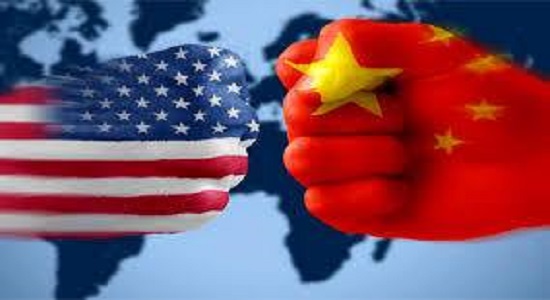The US Trade Representative’s final list includes 1,102 product lines, down from about 1,300 initially, mainly focused on China’s Made In 2025 plan to become dominant in high-technology industries such as robotics, aerospace, industrial machinery and automobiles. Consumer goods including mobile phones and televisions aren’t being subjected to the tariffs.

Hours after the US announcement China’s Finance Ministry issued a list of 545 product categories, also covering about $34 billion in exports from the US, to be subject to an additional 25 per cent tariff starting July 6.
They included a variety of agricultural products, including soybeans, corn and wheat along with beef, pork and poultry, plus automobiles. A second set of tariffs to begin at a later date covered other goods including coal, crude oil, gasoline and medical equipment.
The US imported $506 billion of goods from China last year and exported about $130 billion, leaving a 2017 deficit of $376 billion, according to government figures.
Experts panned Trump’s strategy of using tariffs to attempt to curb China’s manufacturing rise. While the USTR list does target exports of Chinese goods that are the building blocks to becoming an advanced industrial power, there’s little evidence that the tariffs will have enough effect to prevent the nation moving into more advanced fields.
“The mentality of the Trump team is a little strange,” said Andrew Polk, co-founder of research firm Trivium China in Beijing. “They’re saying, ‘We’re going to tax exports from China where they want to be a global superpower,’ he said.
“A much more powerful way to stop China from moving up the value chain is to stop selling them semiconductors,” Polk added.

China has leverage over key exports from US states that voted for Trump in 2016. In April, the Asian nation started levying additional taxes on American fruit, nuts, pork and wine in response to Trump tariffs on steel and aluminium. Products affected include soy, corn, wheat, rice, sorghum, beef, pork, poultry, fish, dairy products, nuts and vegetables.
The Chinese list released Saturday covers almost all farm products imported from the US, said Li Qiang, chief analyst with Shanghai JC Intelligence Co. Ltd. “Given China’s big trade surplus with the US, it will be more difficult and complicated for China” in the future to retaliate if the Trump administration expands the tariffs to more products, said Li. The new list includes more agricultural products, including dairy, alfalfa and seafood, than an initial group published in April.
Escalation looms. In April, Trump asked officials to consider an additional $100 billion in levies. Meanwhile, US Trade Representative Robert Lighthizer said an announcement on US investment restrictions on China will follow in the next two weeks.
“While the end game is a compromise trade deal that meets US demands for stronger Chinese protection of intellectual property rights, the road to a trade deal has become very ugly,” said Rajiv Biswas, APAC chief economist at IHS Markit in Singapore. “Both US and Chinese exporters will suffer considerable economic losses while these punitive tariffs are in place, and many Asian countries that are part of the Chinese manufacturing supply chain will also suffer collateral damage in this escalating trade war.”

India also has now submitted a revised list of 30 items -- including motor cycle, certain iron and steel goods, boric acid and lentils -- to the WTO on which it proposes to raise customs duty by up to 50 per cent.
As duties hiked by the US on certain steel and aluminium products would have implications of about $241 million on India, the raise in tariffs proposed by New Delhi too would have an equal implication on America.
"The US would be collecting $241 million worth of duties by hiking tariffs on certain steel and aluminium items from India, we also proposed to withdraw concessions of similar amount from these 30 products imported by India from the US," a source said.
Earlier in May, India proposed to raise duties by up to 100 per cent on 20 products such as almonds, apple and specific motorcycles imported from the US. The additional duty proposed to be hiked on these items ranges from 10 per cent to 100 per cent.
Read Also: Trump criticises G7 host Justin Trudeau, withdraws endorsement of joint communique















